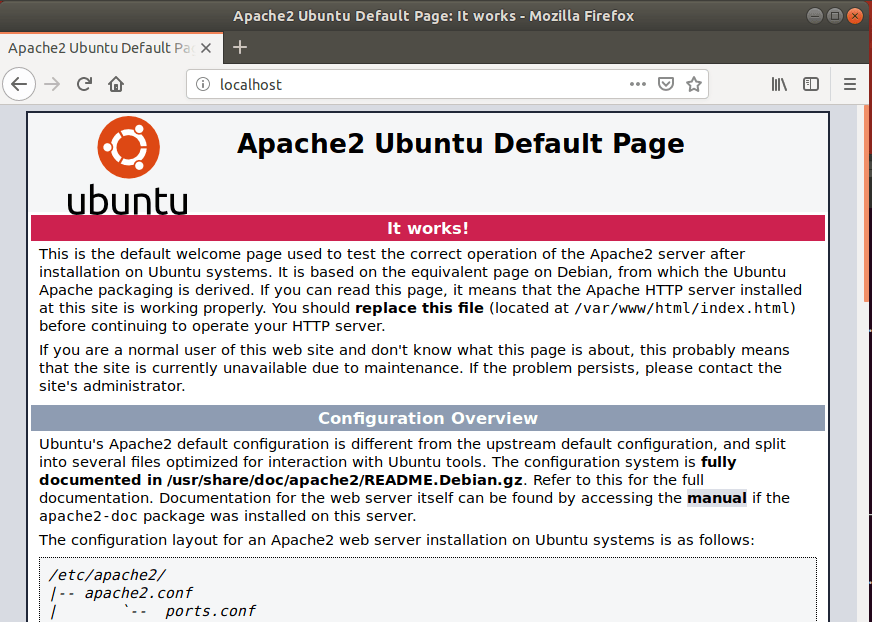For the uninitiated, OTRS is modern, flexible ticket and support software that can serve as a strong alternative to the popular support platforms in use today. If you currently running a ticketing platform and feel like it’s lacking in some areas, you might want to try OTRS. It comes with intuitive mechanisms that allow one to easily migrate from popular solutions to OTRS. OTRS organizes internal and external communication through clear structures and optimized processes allowing IT teams to avoid errors and complete tasks quickly and efficiently. For more about OTRS, please check its homepage. To get started with installing OTRS systems on Ubuntu, follow the steps below:
Install Apache2
Apache2 HTTP Server is the most popular web server in use today. Since OTRS works with a web server, go and install Apache2. To install the Apache2 HTTP server, run the commands below. After installing Apache2, the commands below can be used to stop, start and enable the Apache2 service to always start up with the server boots. To find out if the Apache2 HTTP server is installed, simply open your web browser and type in the server’s IP or hostname. http://localhost When you see a similar page as the one above, then Apache2 is installed and working.
Install Perl and Related Modules
OTRS uses Perl as one of its main components. To get Perl and related modules installed, run the commands below: That should get Perl installed and ready to use.
Install MariaDB Database Server
OTRS also needs a database server to store its content. and MariaDB database server is a great place to start when looking at open-source database servers to use with OTRS. To install MariaDB run the commands below: After installing MariaDB, the commands below can be used to stop, start and enable the MariaDB service always to start up when the server boots. When you’re done, run the commands below to secure the MariaDB server by creating a root password and disallowing remote root access. When prompted, answer the questions below by following the guide.
Enter current password for root (enter for none): Just press the Enter Set root password? [Y/n]: Y New password: Enter password Re-enter new password: Repeat password Remove anonymous users? [Y/n]: Y Disallow root login remotely? [Y/n]: Y Remove test database and access to it? [Y/n]: Y Reload privilege tables now? [Y/n]: Y
Restart MariaDB server To test if MariaDB is installed and working, run the commands below: That should display MariaDB’s service status. After installing the server, run the commands below to open its configuration file. Then add the highlighted lines to the file and save. Save the file and exit, then restart MariaDB:
Create OTRS Database
Now that you’ve installed all required packages, continue below to start configuring the servers. First, create a blank database for OTRS to use. To do that, run the commands below to log on to MariaDB. When prompted for a password, type the root password you created above. Then create a database called otrs Create a database user called otrsuser with a new password Next, grant the user full access to the otrsuser database. Finally, save your changes and exit. Now that the MariaDB server is installed and a database created, now go and install OTRS.
Create OTRS User
It is recommended to run OTRS services, not as root. So run the commands below to create a user called others and add the account to the Apache2 group. When you’re done, continue below to download OTRS
Download and Configure OTRS
Now that your system is prepared and the user for OTRS is created, run the commands below to download the latest OTRS package. Then move the download files to the OTRS home directory. When you’re done, run the commands below to create an OTRS configuration file. The second command should open the configuration file where you’ll add the database name, username, and password created above. Next, run the commands below to open the Apache Perl configuration and enable it. Edit the file and update the highlighted line, then save. When you’re done, run the commands below to configure Apache2 permissions for the directory and create a VirtualHost file. When you’re done with the above, run the commands below to install other Perl packages, and validate that all packages are installed. Then exit from the terminal and validate that all packages are installed. After that, restart Apache2 and Perl by running the commands below: Finally, open your web browser and browse to the server’s hostname or IP address. http://localhost/otrs/installer.pl That should open the installation wizard. Follow the setup wizard until you’re done. On the screen below, choose MySQL and select the option to use an existing database for OTRS. Then type in the database information you created above and continue. After that, enter information for your environment and continue When you’re done, complete the setup and log in with the credential provided. Enjoy! OTRS daemon can be started and activated using the commands below: That’s it! You can begin configuring your environment. Conclusion: This post showed you how to install and configure OTRS ticket systems on Ubuntu 18.04 | 16.04. If you find any error above, please use the comment form below to report. Thanks, You may also like the post below:

